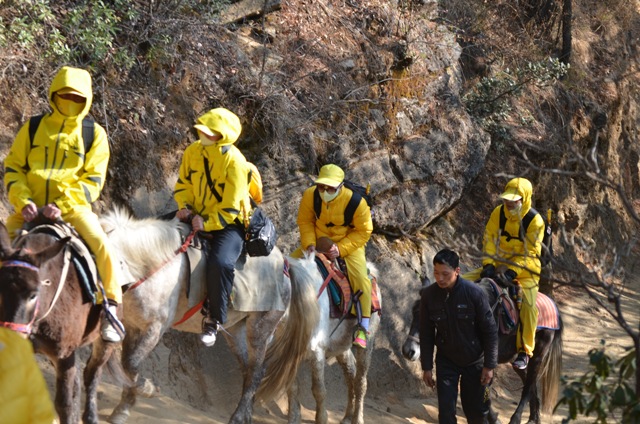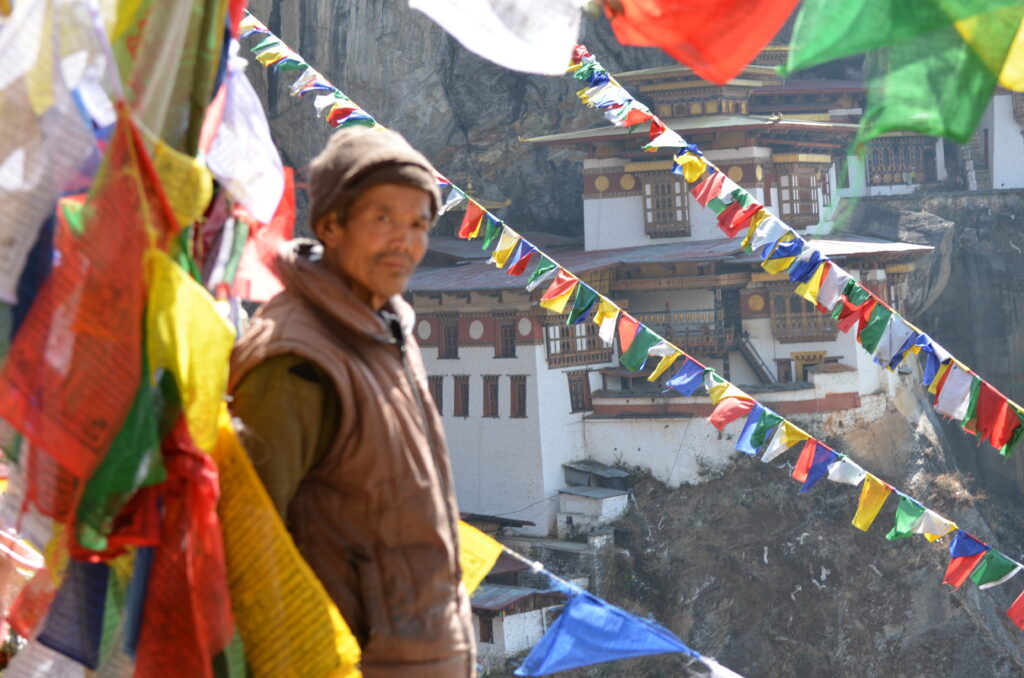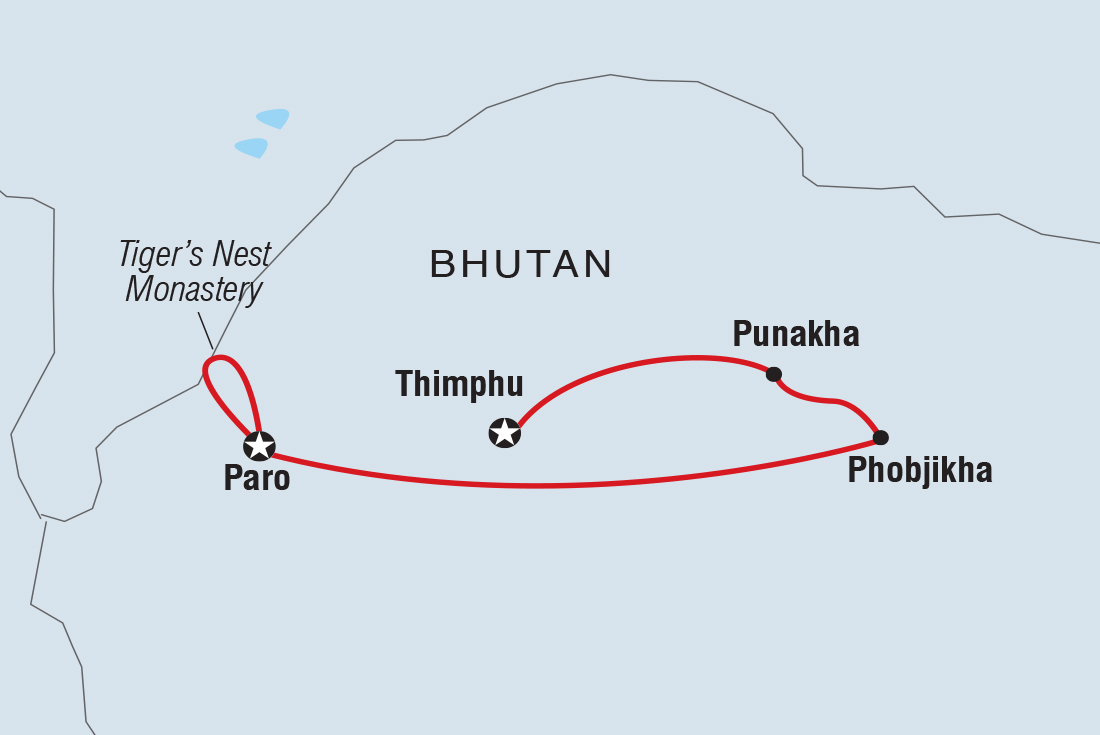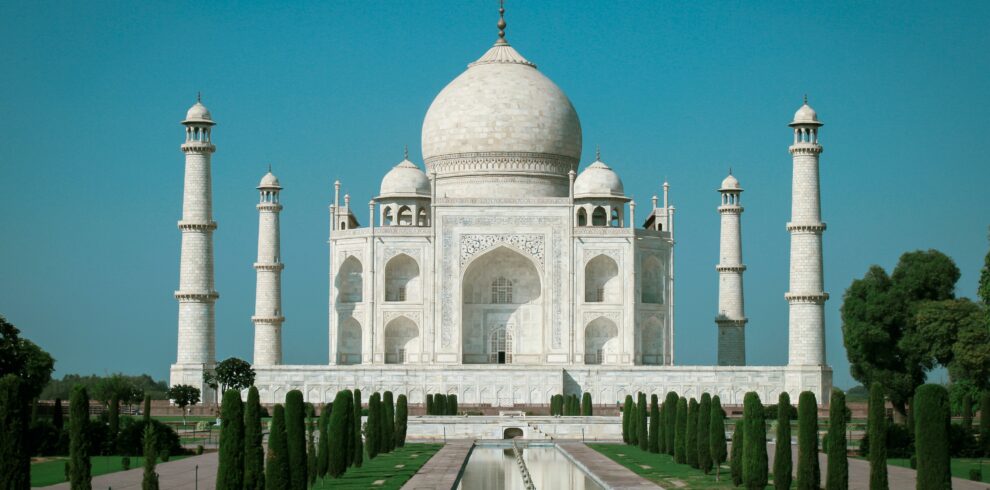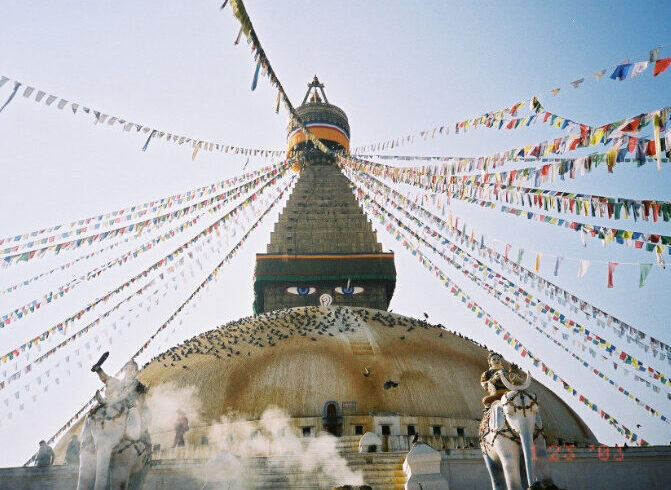THIMPHU & PARO
Overview
Bhutan–Happiness is a Place!
Nestled in the folds of the Eastern Himalayas, remaining in self-imposed isolation for centuries, Bhutan opened up to the world in a glacial pace. The population lived in close harmony with nature, evolving a unique identity, derived largely from a rich religious and cultural heritage. This country of 700,000 people, roughly the size of Switzerland, is the world’s only Mahayana Buddhist country. The Buddhist respect for all sentient beings helped Bhutan protect its pristine ecology and wildlife.
This self-sufficient population was never colonized and had limited contact to the outside world. Buddhism was established in the 8th century by the Indian saint Padmasambhava, popularly known in the Tantric tradition as Guru Rinpoche. Perhaps the most dynamic era in Bhutanese history came in the 17th century with the arrival, in 1616, of Zhabdrung Ngawang Namgyal, the great leader of the Drukpa school of Mahayana Buddhism. He unified the country and established the foundations for national governance and the Bhutanese identity.
In 1907, a historic Assembly of the clergy, the official administration, and the people unanimously elected Gongsar Ugyen Wangchuck as the first hereditary King of Bhutan thus beginning the glorious era of the Wangchuck dynasty. In 2006, the fourth king of Bhutan, Jigme Singye Wangchuck announced that he would abdicate in favor of a constitutional monarchy with a parliamentary democracy. In 2008, the year that marked 100 years of the monarchy saw two important events; the first democratic elections and the coronation of the fifth king, Jigme Khesar Namgyel Wangchuck.
CLOSING DAYS OF SOME MONUMENTS MENTIONED IN ITINERARY:
- Ta Dzong – Paro (National Museum): closed on Government Holidays
- National Library – Thimphu:Closed on Saturday, Sunday& on Government holidays
- Textile Museum – Thimphu: Closed on Government Holidays & on Sunday. On Saturday, it open from 9.00 AM to 4 PM
- Institute of ZorigChusum (Arts & Crafts School) – Thimphu: Closed on Sunday& Government holidays. On Saturday, it open from 10 AM to 12 o’clock. Also closed in winter (from December – early March).
- Simply Bhutan – Thimphu: Closed on Sunday& on Government holidays
- Tiger’s Nest Monastery – Paro: Closed on all Tuesdays
- Folk Heritage Museum:Closed on all Sunday & on government holidays


